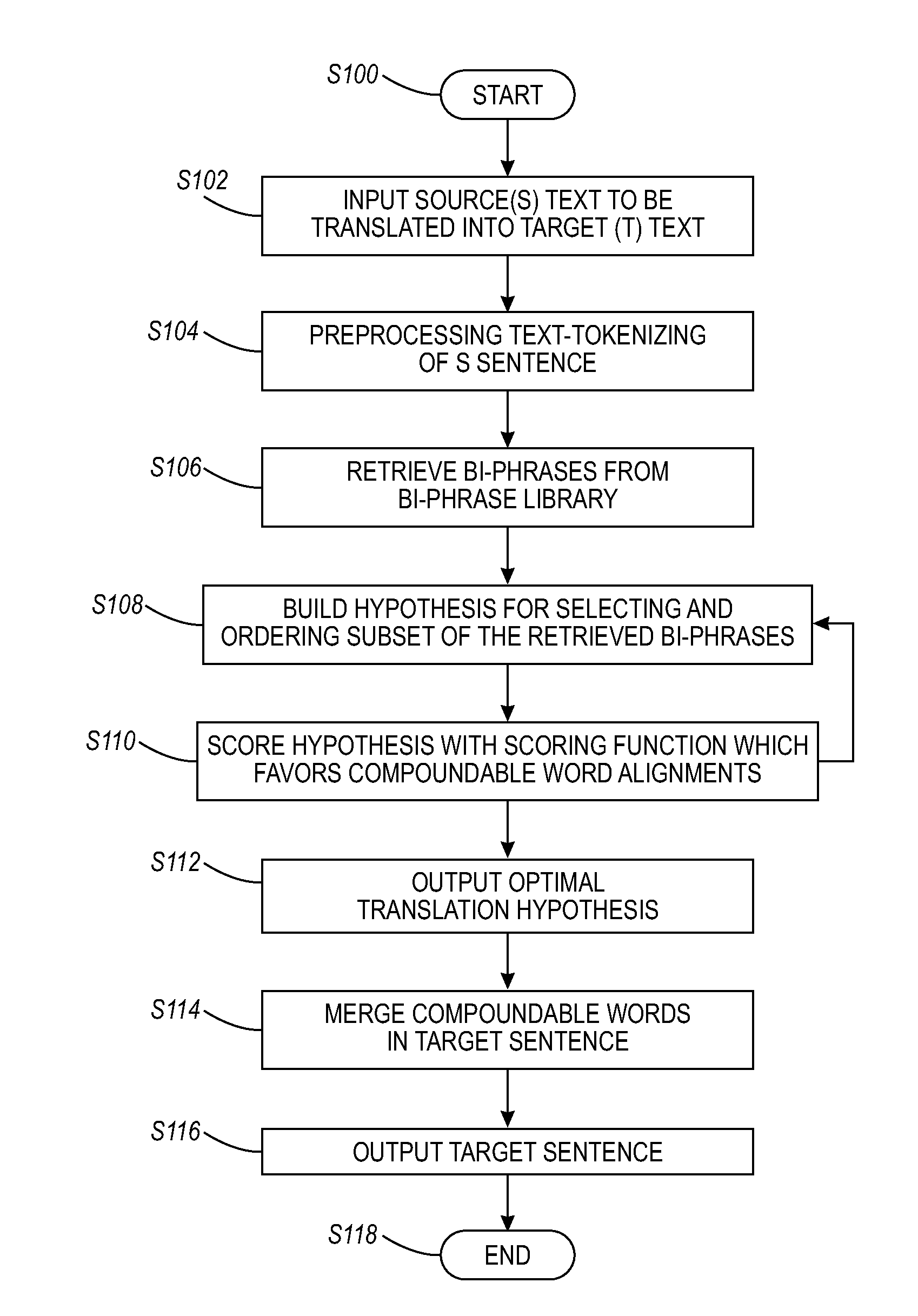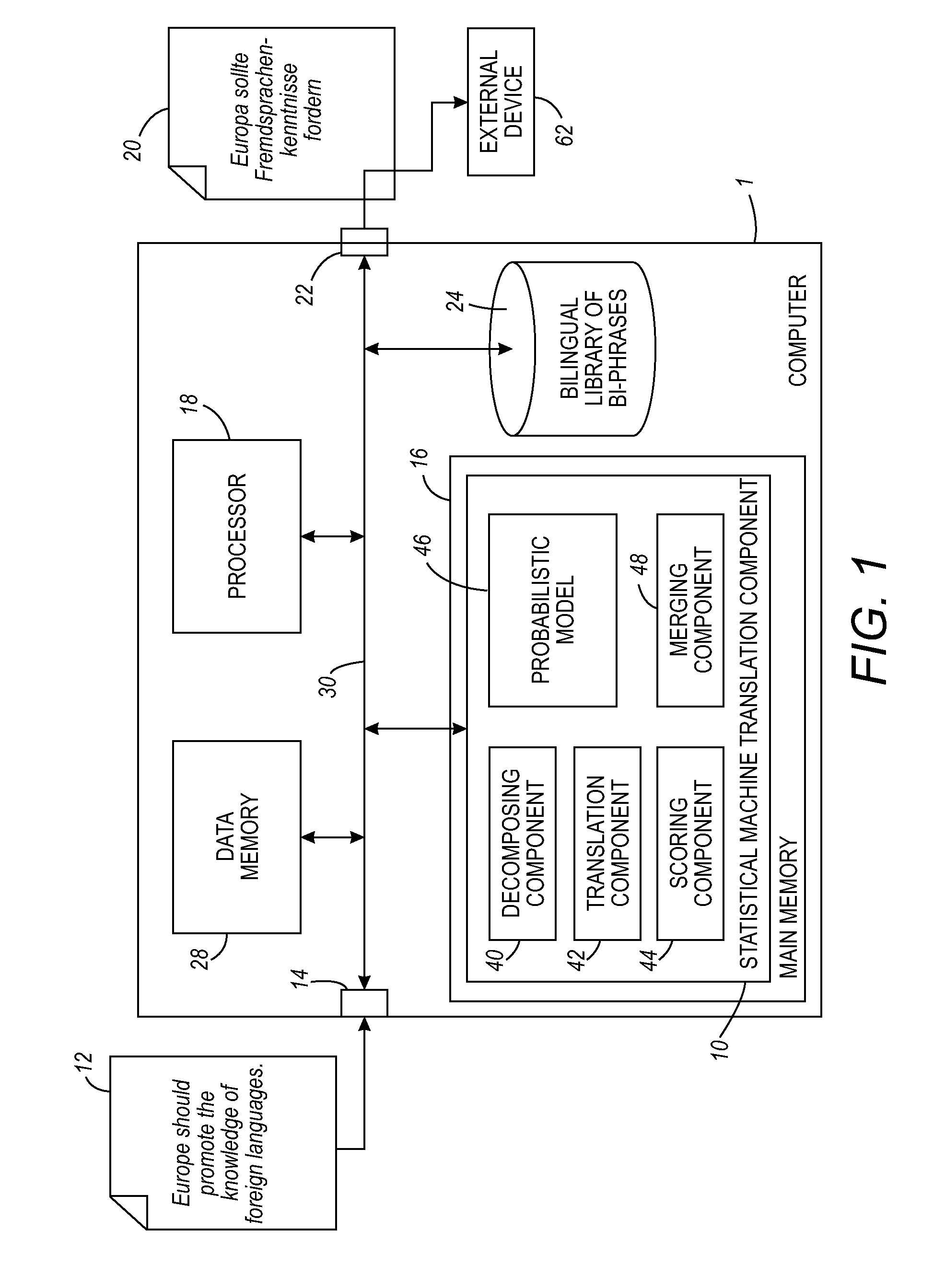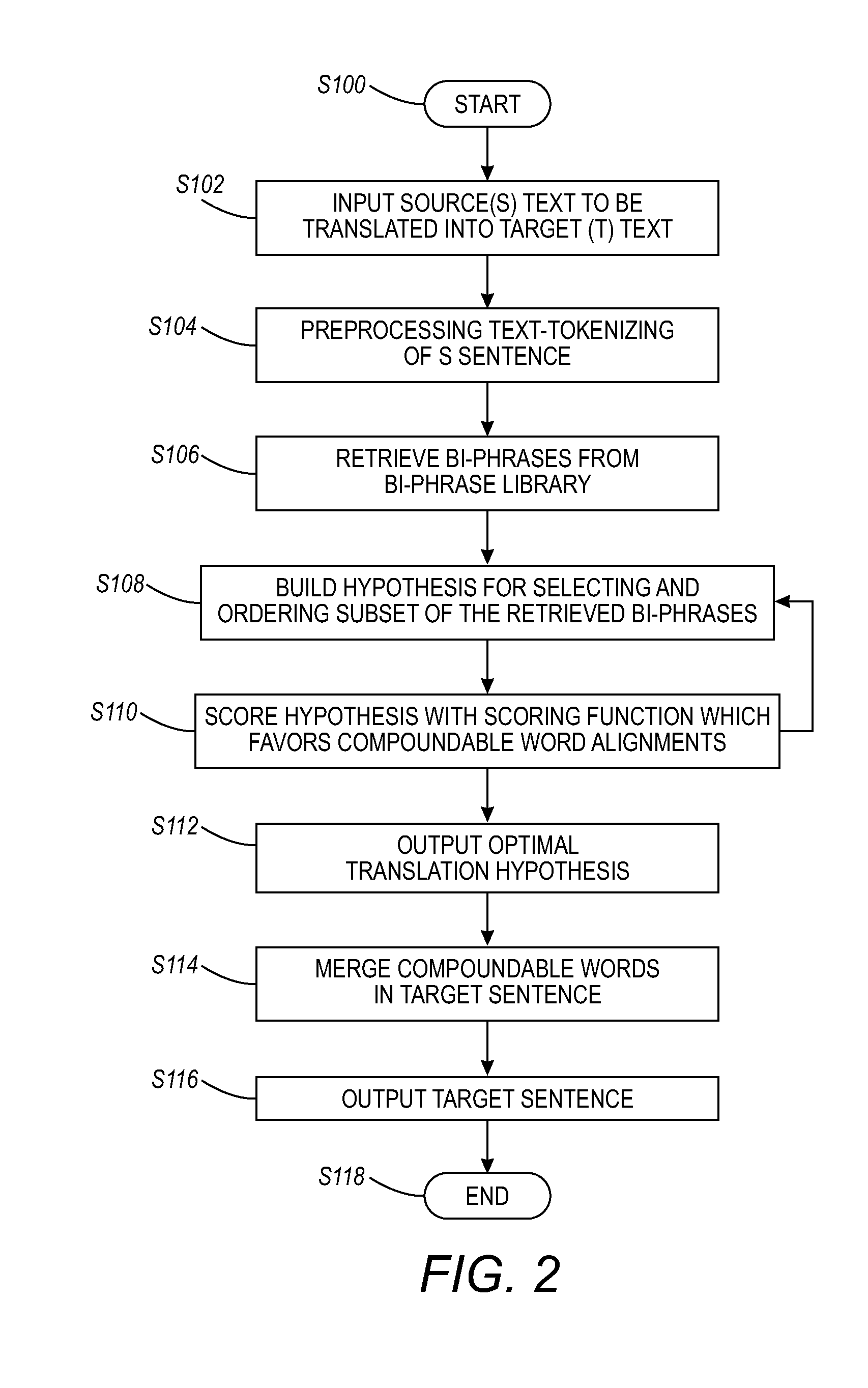Statistical machine translation system and method for translation of text into languages which produce closed compound words
a technology of machine translation and language, applied in the field of machine translation, can solve the problems of poor results of smt techniques in languages with common and productive closed compounding, and the inability to translate into languages which provide closed compounding, when appropriate, and achieve the effect of translations
- Summary
- Abstract
- Description
- Claims
- Application Information
AI Technical Summary
Problems solved by technology
Method used
Image
Examples
example
[0133]An evaluation of translation from English into Danish on a corpus of automotive manuals, extracted from a translation memory was performed. Sentences longer than 55 words were filtered out. The size of the training corpus was 168,046 sentences, and an additional 1,000 sentences each were used for tuning of feature function weights and testing.
[0134]Results are reported on two standard metrics, NIST (see Doddington, George, Automatic evaluation of machine translation quality using n-gram co-occurrence statistics, in Proc. 2d Intern'l Conf. on Human Language Technology, pp. 228-231, San Diego, Calif. (2002)) and Bleu (see Papineni, et al., BLEU: a method for automatic evaluation of machine translation, in Proc. 40th Annual Meeting of the ACL, pp. 311-318, Philadelphia, Pa. (2002)), calculated on lower-cased data.
[0135]Different sequence models were used to compare the present method with other methods. For all sequence models, 3-grams were employed, although it is anticipated th...
PUM
 Login to View More
Login to View More Abstract
Description
Claims
Application Information
 Login to View More
Login to View More - R&D
- Intellectual Property
- Life Sciences
- Materials
- Tech Scout
- Unparalleled Data Quality
- Higher Quality Content
- 60% Fewer Hallucinations
Browse by: Latest US Patents, China's latest patents, Technical Efficacy Thesaurus, Application Domain, Technology Topic, Popular Technical Reports.
© 2025 PatSnap. All rights reserved.Legal|Privacy policy|Modern Slavery Act Transparency Statement|Sitemap|About US| Contact US: help@patsnap.com



